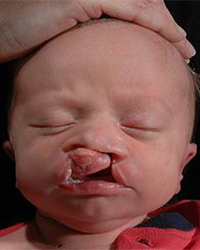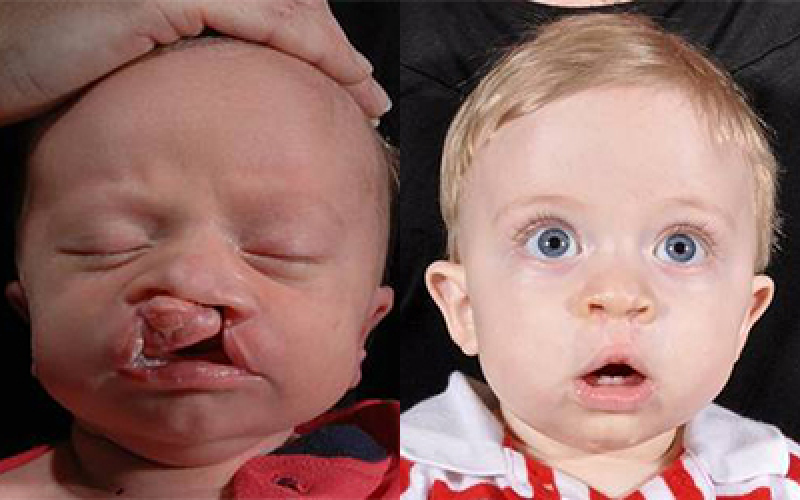Bilateral Cleft Lip/Palate in Dallas, TX
A bilateral cleft lip/palate is more severe because it affects both sides of the mouth. Parents of children with a bilateral cleft lip or palate are not without hope when they visit the International Craniofacial Institute for some of the most advanced care in the world.
A bilateral cleft affects two sides. Like unilateral clefts, there are varying degrees – ranging from fairly minor to very extensive. Below are the major categories of bilateral clefts.
Bilateral cleft lip
This involves the lip having two clefts, dividing the lip into three segments – creating two lateral segments and a middle segment without muscles and a colored border. Bilateral cleft lip may be symmetrical but can also be asymmetrical, in which case the lip is divided more on one side than on the other. Patients with bilateral cleft lip most often have a nasal malformation as well. However, a symmetrical cleft that extends only into the lower portion of the upper lip may not affect the nose.
Bilateral cleft lip and alveolus (dental ridge)
This occurs when the lip and dental ridge are each divided into three segments. Most often, the lip is completely divided on both sides. However, the dental ridge is not always completely divided. Further, one side may have an obvious cleft while the other has only a groove or indentation. In cases where the dental ridge is separated completely on both sides, the middle bony segment tends to grow beyond the limits of the dental ridge, protrude forward, and sometimes even protrude downward. This middle protrusion is called the prolabium (pro = in front of; labium = of the lips). The dental ridge may be missing teeth or have rotated or abnormally shaped teeth adjacent to the cleft. Teeth may even erupt into the palate or crowd each other.
Bilateral cleft lip, alveolus (dental ridge) and palate (roof of the mouth)
This is the least common and most severe form of cleft lip. The condition is similar to bilateral cleft lip and alveolus but also involves the palate. The lip, dental ridge, and palate are each divided into three segments. Most often, the lip is completely divided on both sides. However, the dental ridge is not always completely divided. One side may have an obvious cleft while the other has only a groove or indentation. In cases where the dental ridge is separated completely on both sides, the middle bony segment tends to grow beyond the limits of the dental ridge, protrude forward, and sometimes even protrude downward. This middle protrusion is called the prolabium.
The cleft dental ridge may have missing, rotated, or abnormally shaped teeth adjacent to the cleft. Teeth may even erupt into the palate or crowd each other. The mouth/palate area may be too short front to back, with an extremely narrow and asymmetrical upper jaw shape. The cleft palate leaves an open area between the inner mouth and nasal area, allowing food and fluids from the mouth to pass easily into the nose. This requires special feeding precautions.
Why Choose International Craniofacial Institute?
Since its founding by Dr. Kenneth Salyer in 1971, the International Craniofacial Institute has gained worldwide recognition as being one of the most advanced facilities in the treatment of craniofacial disorders. The complexity of the field means we understand our patients have an array of dental, medical, psychosocial, and surgical needs. To address these issues, our team consists of many dedicated professionals who represent more than 15 disciplines of specialty. Our physicians have successfully treated more than 17,000 patients from more than 30 different countries. We additionally train surgeons from many world locations in the advanced techniques required for craniofacial diagnosis, surgical correction, and repair.
If you have a child or another family member who is suffering from a genetic syndrome or has a cleft lip, cleft palate, or craniofacial complication, the staff at the International Craniofacial Institute can help. Contact us today to talk with the doctors and staff about your options and how we can help.


